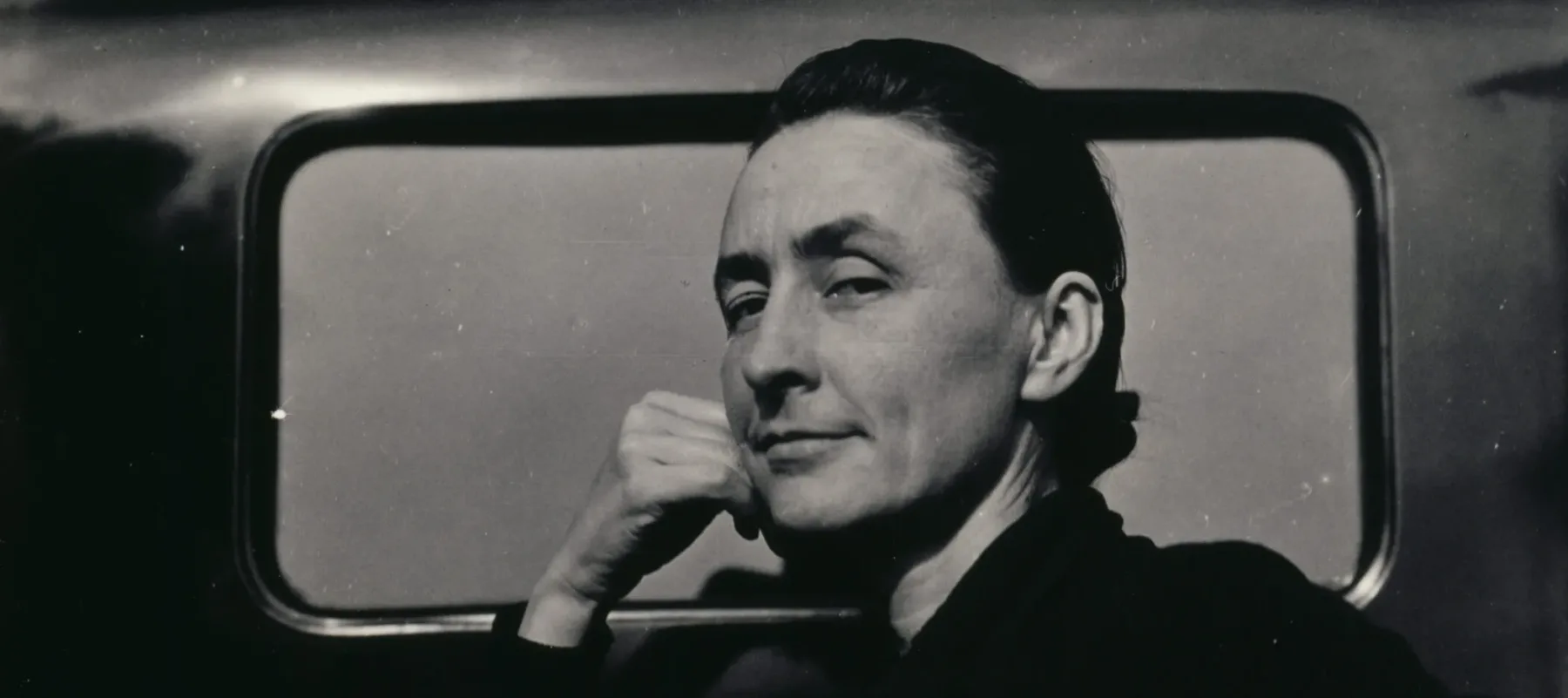In a 1922 interview with the New York Sun, Georgia O’Keeffe (1887–1986) stated, “Nothing is less real than realism. Details are confusing. It is only by selection, by elimination, by emphasis that we get to the real meaning of things.”1

O’Keeffe’s “Jack-in-Pulpit” paintings were inspired by the flowers she saw around her summer home on Lake George in New York’s Adirondack Mountains. No. 2 depicts a literal step backward from No. 1, with a broader view, increased surrounding foliage, and the entire flowering portion visible. In No. 2, O’Keeffe’s color choices are less true to life, and she begins to manipulate both size and composition.
O’Keeffe simplifies the flower, dramatizing its striped surface. Green leaves at the painting’s border pull back to reveal and frame the flower, functioning like a natural version of a theatrical curtain. The dark, tubular form of the jack emerges from the stem at the center of the painting. Its prime positioning suggests importance, and indeed, as the series progresses, O’Keeffe removes all extraneous elements and lets the jack stand alone.
As she implied in her 1922 interview, O’Keeffe associated the process of abstraction with a search for truth. In regard to this series, she said that the jack is “the thing that makes you interested in that flower . . . so I painted just the jack.”2 By stripping away the surrounding leaves of other plants and even the jack-in-the-pulpit’s own flower and stem, O’Keeffe reveals the essence of the flower by the final painting in the series.
While Jack-in-Pulpit—No. 2 is not as pared down and streamlined as the subsequent works in this series, it represents an important step in her process of modernist simplification. O’Keeffe often used serial paintings to work through a motif, rethinking a natural object in increasingly abstract terms with each new interpretation. She also tended to explore minute natural elements in grand scale. This had to do not only with the process of abstraction but also with building her reputation. In a statement for a 1939 exhibition, O’Keeffe explained the scale of her flower paintings: “So I said to myself—I’ll paint what I see—what the flower is to me but I’ll paint it big and they will be surprised into taking time to look at it—I will make even busy New Yorkers take time to see what I see of flowers.”3
O’Keeffe’s use of exaggerated scale and abstraction had another effect, one that dealers and art historians have analyzed and debated intensely. Her paintings, no longer instantly recognizable as their original sources, have been the subject of a variety of anthropomorphic interpretations. O’Keeffe’s flowers and even her skyscrapers have been compared to both female and male anatomy. Her husband, photographer and gallerist Alfred Stieglitz, encouraged such Freudian readings. He saw her work as representative of the essence of femininity, famously proclaiming upon seeing her work for the first time: “At last, a woman on paper!”
He often exhibited her paintings alongside nude photographs he took of her, as if O’Keeffe’s body and work were intrinsically connected. However, O’Keeffe staunchly resisted these suggested interpretations. In the same 1939 exhibition statement, O’Keeffe wrote, “When you took time to really notice my flower you hung all your own associations with flowers on my flower and you write about my flower as if I think and see what you think and see of the flower—and I don’t.”
The “Jack-in-Pulpit” progression was O’Keeffe’s last significant flower series. While she still spent time at Lake George through the mid-1930s, she began traveling more frequently to New Mexico, where she painted subjects inspired by the desert landscape.
Jack-in-Pulpit—No. 2 and four of the other five paintings from this series remained in O’Keeffe’s personal collection until her death in 1986. She bequeathed this painting and three others to the National Gallery, and it has been shown in exhibitions of her work around the country.
Notes
1. “I Can’t Sing, So I Paint! Says Ultra Realistic Artist; Art is Not Photography—It Is Expression of Inner Life!: Miss O’Keeffe Explains Subjective Aspect of Her Work,” New York Sun, December 5, 1922, quoted in Jonathan Stuhlman, Georgia O’Keeffe: Circling Around Abstraction (Manchester, VT: Hudson Hills Press, 2007), p. 22.
2. As quoted in the Whitney Museum of American Art’s Watch and Listen Audio Guides, “Georgia O’Keeffe, Jack-in-Pulpit—No. 2, 1930.”
3. Georgia O’Keeffe, “About Myself,” Georgia O’Keeffe: Exhibition of Oils and Pastels (New York: An American Place Gallery, 1939), n.p.
